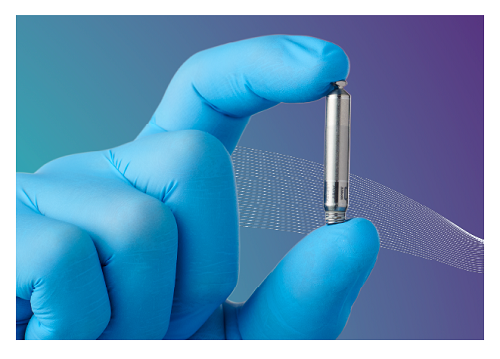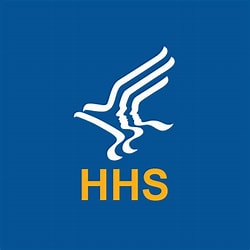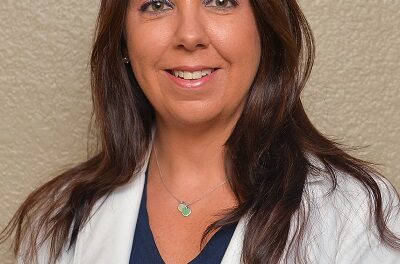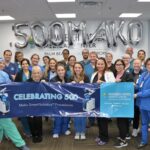Cleveland Clinic Previously Performed First Implant of Dual-Chamber Leadless Pacemaker in United States
May 20, 2023 – Findings from a Cleveland Clinic-led clinical trial which assessed the safety and performance of a dual-chamber leadless pacemaker system in humans showed that the device met the primary safety and performance study goals and provided heart pacing support and reliable timing between atrial and ventricular activity for 3 months after implantation.
Findings were presented today during a Late Breaking Clinical Trials and Science Session at Heart Rhythm 2023, the Heart Rhythm Society’s 44th annual meeting in New Orleans and simultaneously published in the New England Journal of Medicine.
In March 2022, Cleveland Clinic successfully implanted the dual-chamber leadless pacemaker system in the first patient in the United States as part of the global clinical trial, which aimed to offer heart rhythm patients a more targeted approach through a less invasive procedure with fewer complications.
The multi-center pivotal study enrolled up to 550 patients with abnormal heart rhythms at up to 85 sites worldwide. From February through August 2022, a total of 300 enrolled patients underwent an implantation attempt across 55 centers in the United States, Canada, and Europe. The study evaluated the safety, performance and effectiveness of The Aveir™ leadless pacemaker system, developed by Abbott.
The leadless pacemaker system used in the trial included two leadless pacemakers – one for the right ventricle and one for the right atrium. These two devices are designed to communicate with each other to provide beat-by-beat communication based on the patient’s needs.
In the study, the implantation procedure was successful in 295 patients (98.3%), and 3-month safety and performance results exceeded the prespecified boundaries for success, with the results for all three meeting the criteria for significance.
In the study, 90.3% of the patients were free from device- or procedure-related serious adverse events at 90 days after implantation. In the analysis, the electrical performance targets for the atrial (upper chamber) device were met in 90.2% of the patients at the 3 month follow-up visit. A total of 35 device- or procedure-related serious adverse events occurred in 29 patients.
Pacemakers are used to treat abnormally slow heart rhythm disorders, including sinus node dysfunction, which is the inability of the sinus node to create an appropriate heart rate. Pacemakers also treat heart block, which occurs when the electrical signals from the top chambers of the heart don’t conduct properly to the bottom chambers. Such arrhythmias, irregular or abnormal rhythms, can cause difficulty breathing, dizziness, fainting or even sudden cardiac death in some instances.
Traditional pacemakers require an incision to implant a battery placed under the skin near the collarbone, which then connects to wires that are stretched through veins and attached to the heart muscle.
Previous studies have shown that up to one in six patients will experience a complication with this type of pacemaker over a three-year period, most commonly bleeding or infection in the surgical pocket or dislodgement, fracture or blood clots around the wires. Leadless pacemakers are miniaturized devices implanted directly into the heart, and do not require wires or incisional access.
“These outcomes exceeded our performance goals, meaning more patients who require pacing support may soon have a less invasive option, and we can now offer a more targeted approach,” says Daniel Cantillon, M.D., co-principal investigator of the study and former research director and associate section head of Cardiac Electrophysiology and Pacing in the Heart, Vascular & Thoracic Institute at Cleveland Clinic. “Until now, leadless pacing has been limited to stimulating the heart’s lower chambers. This new system can pace both upper and lower chambers using beat-to-beat wireless communication, which expands the benefits of leadless pacing to serve the needs for a majority of patients worldwide.”
Dr. Cantillon, who now works for Masimo, reports financial interests with Abbott associated with speaking, consulting and service on scientific advisory boards.
“We are always looking for ways to improve the quality of life for our patients, and we are proud to have contributed to this latest advancement in dual-chamber leadless pacemaker technology,” adds Oussama Wazni, M.D. section head of electrophysiology and pacing at Cleveland Clinic.






























